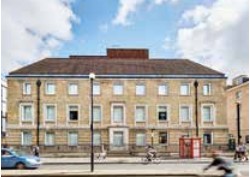Collaborative leadership? It's what a sustainable future in the built environment sector requires. Dr Tim Forman, from the Cambridge Institute for Sustainability Leadership, at the University of Cambridge explains more.
The built environment sector is experiencing a seismic shift – this may be obvious to some but not yet apparent to others. For decades it has ranked among the slowest sectors to adapt and innovate, and it has remained a principal driver of carbon emissions, and therefore climate change, countless forms of pollution, depletion of natural capital, and labour and social concerns the world over. It now faces a new reality.
In this new reality, changes in consumer demand, finance, regulations, government policy, and in society's expectations of corporate responsibility, mean the viability of business-as-usual practices is waning. Unchecked climate and nature emergencies are bringing larger and more frequent weather extremes and calamitous events. Built environments need to be made more resilient if they are to be sustainable – financially, ecologically, and physically.
Our patterns of working and living are changing, and major technological and social shifts are emerging at increasing rates. As our demands of built environments evolve, new realities are shaping not just how people use built assets and land, interact within communities and spaces, and how we transport ourselves and our goods, but also how we build, operate, and value assets, exchange information, and increasingly, define the roles of built environment professionals. With world governments and industry setting incredibly ambitious targets for energy, carbon, waste, and natural capital, the sector's path to a sustainable future is virtually cliff-like. Unsurprisingly, demand is soaring for those who can do things differently – whether it be planning, designing, constructing, operating, or critically, adapting, reusing, retrofitting and conserving built assets. Change is being led across disciplines, at all levels, and noticeably, by the scaling of innovations achieved through collaboration.
The Cambridge Institute for Sustainability Leadership's (CISL) engagement with this central global challenge extends from its educational and programme activity to its recent refurbishment and retrofit of a 100-year-old building in Cambridge, renamed Entopia. Originally built to house a telephone exchange, the building now provides newly refurbished flexible office space for the Institute's 140 staff and Canopy, a dynamic network of start-ups and innovators. This was delivered through a deep green refurbishment and retrofit to optimise energy efficiency and indoor environmental quality and address myriad sustainability targets. The project employed circular design and used bio-based, reused, and recycled materials where possible, followed responsible practices, and produced a fraction of the embodied carbon associated with new construction (and many refurbishments). The building has received the EnerPHit standard and aims to achieve WELL Gold and BREAAM Outstanding certification.
These successes were borne from collaboration and 'shared leadership' in pursuing demanding targets. This empowering and collaborative approach to sustainability also underpins CISL's part-time accredited and non-accredited education programmes for built environment professionals. The programmes, which deepen individuals' understandings and develop competencies in sustainability practice, include a two-year Master's, a 10-month Postgraduate Certificate, and an eight-week online certificate course.
Meaningful, timely change and scaling of innovation are enormous challenges only surmountable when professionals develop and apply new knowledge and expertise through effective collaboration. The built environment sector's future is here now.
For more information visit: www.cisl.cam.ac.uk/about/entopia-building
Source: Offsite Magazine









